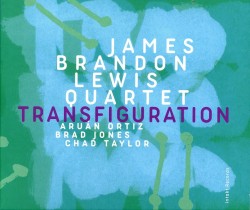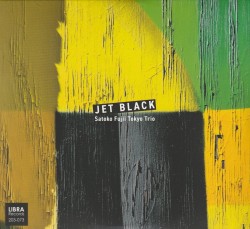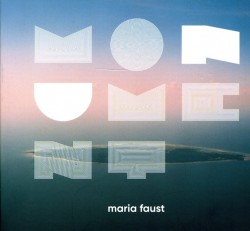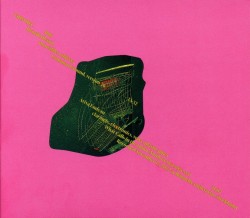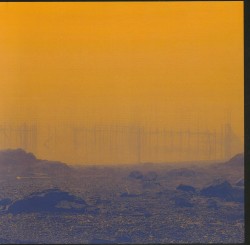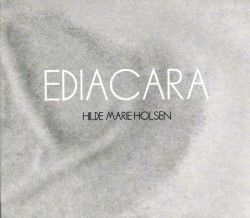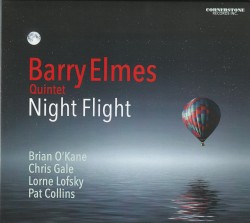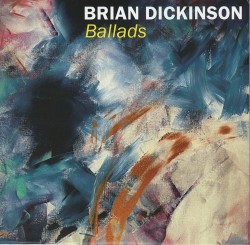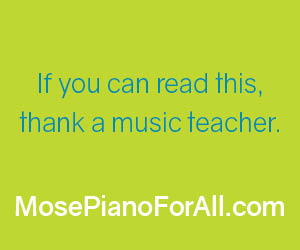Record producer Zev Feldman has emerged as a leading figure in archival jazz, uncovering, restoring and releasing materials with a variety of labels, including Resonance, Jazz Detective and Elemental, often geared to Record Store Days for vinyl LP releases with CDs following shortly thereafter. For Spring of 2024, he has outdone himself, with a bevy of previously unknown recordings that cover a 40 year span of jazz history, with an emphasis on pianists, from Art Tatum to Sun Ra to Mal Waldron to Kenny Barron, and saxophonists as well, from John Gilmore with Sun Ra to Steve Lacy and Yusef Lateef.
There’s something about the breadth of jazz, its musicians, audiences, histories and generations, that these sets reveal. While Tatum and Sun Ra might seem highly dissimilar, they were born within five years of each other: each entertains, one with flamboyant virtuosity and good manners; the other hectoring, shocking, pontificating. As brilliant as their divergent creations are, the music is immediately accessible. The others -- Waldron, Lacy, Lateef and their associates – are concert artists, almost anonymous apart from the music they create here, not coincidentally, for Belgian and French audiences.
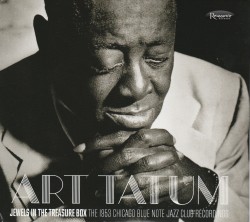 Art Tatum, virtually a transcendent pianist, can be introduced anecdotally. Fellow pianist Fats Waller once remarked of his presence, “God is in the house tonight.” A teenage Charlie Parker purportedly worked as a dishwasher at Jimmy’s Chicken Shack in Harlem to hear Tatum nightly. He also lends his name to the “tatum”, defined as the fastest pulse present in a piece of music. While best known for his solo recordings, Tatum worked frequently in a trio format, as heard on Jewels in the Treasure Box: The 1953 Chicago Blue Note Jazz Club Recordings (Resonance R3C-2064 3LPs/3CDs resonancerecords.org). The sidemen supply comic interpolation as well as musical support. On I Cover the Waterfront, guitarist Everett Barksdale slyly inserts Nobody Knows the Trouble I’ve Seen, while bassist Slam Stewart, renowned for playing arco while humming in unison an octave higher, suddenly interpolates London Bridge. The music covers a broad musical and emotional range, but it’s essentially celebratory. Tatum possesses a joyous command of musical materials, happily doubling tempos, slowing to a dirge, then throwing in tumbling keyboard-long runs or brilliantly precise boogie-woogie. The trio achieves some remarkable three-way play on a blistering rendition of St. Louis Blues.
Art Tatum, virtually a transcendent pianist, can be introduced anecdotally. Fellow pianist Fats Waller once remarked of his presence, “God is in the house tonight.” A teenage Charlie Parker purportedly worked as a dishwasher at Jimmy’s Chicken Shack in Harlem to hear Tatum nightly. He also lends his name to the “tatum”, defined as the fastest pulse present in a piece of music. While best known for his solo recordings, Tatum worked frequently in a trio format, as heard on Jewels in the Treasure Box: The 1953 Chicago Blue Note Jazz Club Recordings (Resonance R3C-2064 3LPs/3CDs resonancerecords.org). The sidemen supply comic interpolation as well as musical support. On I Cover the Waterfront, guitarist Everett Barksdale slyly inserts Nobody Knows the Trouble I’ve Seen, while bassist Slam Stewart, renowned for playing arco while humming in unison an octave higher, suddenly interpolates London Bridge. The music covers a broad musical and emotional range, but it’s essentially celebratory. Tatum possesses a joyous command of musical materials, happily doubling tempos, slowing to a dirge, then throwing in tumbling keyboard-long runs or brilliantly precise boogie-woogie. The trio achieves some remarkable three-way play on a blistering rendition of St. Louis Blues.
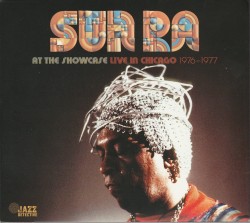 Genius can have different periods of gestation, witness the contrasting cases of Tatum and Sun Ra. While decades separated their styles and celebrity, Sun Ra was only five years younger than Tatum, an obscure record producer and bandleader in Chicago when Tatum played at the Blue Note. After extended stays in Montreal and New York and permanent relocation to Philadelphia, Sun Ra occasionally returned to Chicago for triumphant performances, as evidenced by Sun Ra at the Showcase: Live in Chicago 1976-1977 (Jazz Detective DDJD-013 deepdigsmusic.com). Sun Ra was undoubtedly a genius, mixing musical and theatrical elements into a bizarre pageant that threw multi-hued lights on the African experience in America. For a period of some four decades, from the mid-1950s to Sun Ra’s death in 1993, Sun Ra and John Gilmore worked together, somehow Sun Ra’s mysterious electronic keyboard fantasias and prophetic pronouncements both contrasting and fusing with Gilmore’s hard-edged, intense tenor saxophone, his work particularly prominent here, rooting the music in urban reality. There’s also the collective squall of several alto saxophonists (among them Marshall Allen, the band’s current leader, who recently turned 100), percussionists and singers, totalling 19 in all. The sets are presented in reverse order, an early evening set from 1977 preceding a final set from 1976. The polyrhythmic Ankhnatan, first recorded in the 1950s, successfully encapsulates big band swing, funk and free jazz, while Ebah Speaks in Cosmic Tongue, a solo encore by trumpeter Akh Tal Ebah, is a manic vocal feature ranging from glossolalia to gospel to screaming, all propelled by the shouting audience.
Genius can have different periods of gestation, witness the contrasting cases of Tatum and Sun Ra. While decades separated their styles and celebrity, Sun Ra was only five years younger than Tatum, an obscure record producer and bandleader in Chicago when Tatum played at the Blue Note. After extended stays in Montreal and New York and permanent relocation to Philadelphia, Sun Ra occasionally returned to Chicago for triumphant performances, as evidenced by Sun Ra at the Showcase: Live in Chicago 1976-1977 (Jazz Detective DDJD-013 deepdigsmusic.com). Sun Ra was undoubtedly a genius, mixing musical and theatrical elements into a bizarre pageant that threw multi-hued lights on the African experience in America. For a period of some four decades, from the mid-1950s to Sun Ra’s death in 1993, Sun Ra and John Gilmore worked together, somehow Sun Ra’s mysterious electronic keyboard fantasias and prophetic pronouncements both contrasting and fusing with Gilmore’s hard-edged, intense tenor saxophone, his work particularly prominent here, rooting the music in urban reality. There’s also the collective squall of several alto saxophonists (among them Marshall Allen, the band’s current leader, who recently turned 100), percussionists and singers, totalling 19 in all. The sets are presented in reverse order, an early evening set from 1977 preceding a final set from 1976. The polyrhythmic Ankhnatan, first recorded in the 1950s, successfully encapsulates big band swing, funk and free jazz, while Ebah Speaks in Cosmic Tongue, a solo encore by trumpeter Akh Tal Ebah, is a manic vocal feature ranging from glossolalia to gospel to screaming, all propelled by the shouting audience.
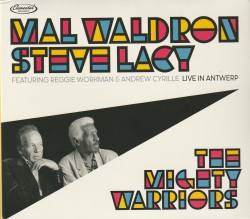 As long-term American expatriates in Europe, pianist Mal Waldron and soprano saxophonist Steve Lacy worked together often, clearly complementing one another’s incisive minimalism and dark lyricism. However, The Mighty Warriors: Live in Antwerp (Elemental 5990446: 2LPs/2CDs elemental-music.com) has even more to recommend it than usual: the presence of visiting New Yorkers, every bit their equals, bassist Reggie Workman and drummer Andrew Cyrille providing special stimulus. These are forceful performances, intense examinations of well articulated themes. Disc One is about roots, with Waldron’s What It Is and Lacy’s Longing alternating with Thelonious Monk’s Epistrophy and Monk’s Dream. It’s rock-solid music with every element sculpted in the compound legacies of bop and blues, each one focussed with watchmaker precision, with Lacy’s devotion to Monk’s music particularly apparent. Disc Two is highly exploratory. Workman’s Variation of III begins with an extended bass solo that develops a range of techniques, the instrument seemingly in dialogue with itself. Cyrille, too, creates tremendous drama, by contrasting volumes, densities and timbres. What comes through strongly here is a collective economy, even in free improvisation.
As long-term American expatriates in Europe, pianist Mal Waldron and soprano saxophonist Steve Lacy worked together often, clearly complementing one another’s incisive minimalism and dark lyricism. However, The Mighty Warriors: Live in Antwerp (Elemental 5990446: 2LPs/2CDs elemental-music.com) has even more to recommend it than usual: the presence of visiting New Yorkers, every bit their equals, bassist Reggie Workman and drummer Andrew Cyrille providing special stimulus. These are forceful performances, intense examinations of well articulated themes. Disc One is about roots, with Waldron’s What It Is and Lacy’s Longing alternating with Thelonious Monk’s Epistrophy and Monk’s Dream. It’s rock-solid music with every element sculpted in the compound legacies of bop and blues, each one focussed with watchmaker precision, with Lacy’s devotion to Monk’s music particularly apparent. Disc Two is highly exploratory. Workman’s Variation of III begins with an extended bass solo that develops a range of techniques, the instrument seemingly in dialogue with itself. Cyrille, too, creates tremendous drama, by contrasting volumes, densities and timbres. What comes through strongly here is a collective economy, even in free improvisation.
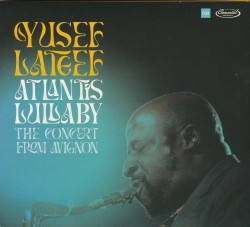 Yusef Lateef was a musician in whom immediate roots and visionary possibilities were always intertwined, from blues-drenched passion to explorations of alternative rhythms and pitches, even integrating Middle Eastern strings and reeds on his recordings from 1957. His studies in world music dovetailed with his work throughout a lengthy career as performer, composer and educator. Atlantis Lullaby: The Concert in Avignon (Elemental 5990450 elemental-music.com) was recorded for broadcast in 1972. Lateef’s huge tenor saxophone sound is apparent on the modal Inside Atlantis, the soulful Yusef’s Mood and the ballad I’m Getting Sentimental Over You, while several tracks stretch toward India. Contributing much to the music’s overall quality, its blend of polish, vitality and invention, is the band, Lateef’s working quartet from 1971 to 1975. Pianist Kenny Barron contributes several compositions, including the extended, constantly shifting The Untitled. Bassist Bob Cunningham is an exceptional soloist, with Roy Brooks’ exotic Eboness a feature for his creativity with bowed harmonics. Drummer Albert “Tootie” Heath, a model of support, comes to the fore playing Indian flute on Lowland Lullaby, a duet with Cunningham.
Yusef Lateef was a musician in whom immediate roots and visionary possibilities were always intertwined, from blues-drenched passion to explorations of alternative rhythms and pitches, even integrating Middle Eastern strings and reeds on his recordings from 1957. His studies in world music dovetailed with his work throughout a lengthy career as performer, composer and educator. Atlantis Lullaby: The Concert in Avignon (Elemental 5990450 elemental-music.com) was recorded for broadcast in 1972. Lateef’s huge tenor saxophone sound is apparent on the modal Inside Atlantis, the soulful Yusef’s Mood and the ballad I’m Getting Sentimental Over You, while several tracks stretch toward India. Contributing much to the music’s overall quality, its blend of polish, vitality and invention, is the band, Lateef’s working quartet from 1971 to 1975. Pianist Kenny Barron contributes several compositions, including the extended, constantly shifting The Untitled. Bassist Bob Cunningham is an exceptional soloist, with Roy Brooks’ exotic Eboness a feature for his creativity with bowed harmonics. Drummer Albert “Tootie” Heath, a model of support, comes to the fore playing Indian flute on Lowland Lullaby, a duet with Cunningham.
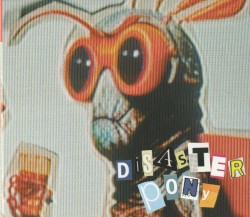 Disaster Pony
Disaster Pony

